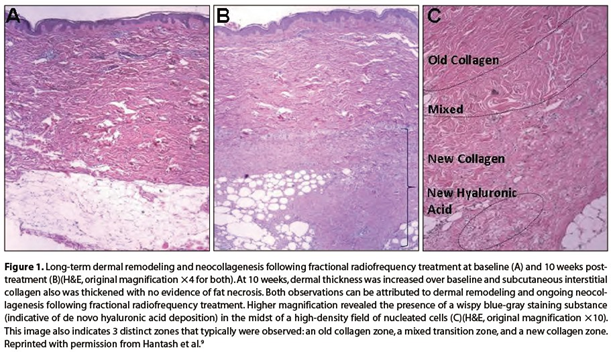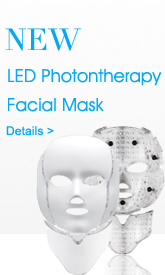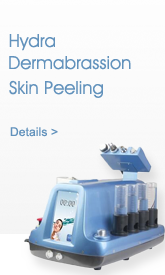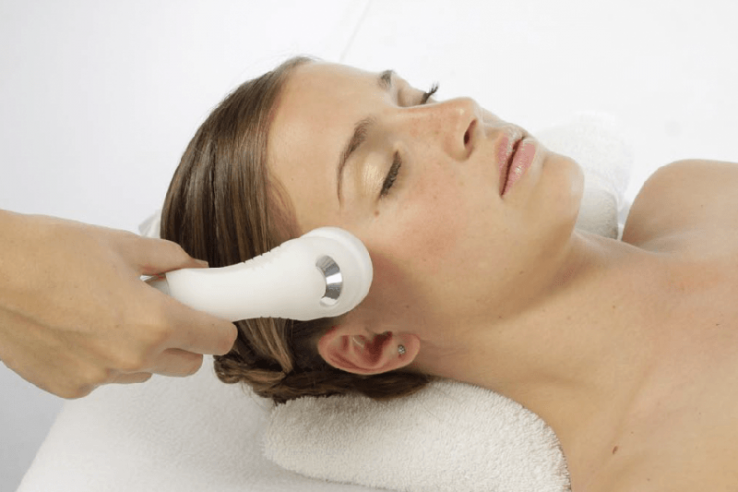Radiofrequency (RF) technologies are increasingly employed in dermatology to achieve skin rejuvenation with minimal adverse effects and downtime.
Radiofrequency (RF) technologies are increasingly employed in dermatology to achieve skin rejuvenation with minimal adverse effects and downtime. Radiofrequency enables physicians to augment targeted tissue layers while sparing melanocytes and the cutaneous surface, thereby preventing dyspigmentation and prolonged wound healing. Recent advances in RF have expanded the array of treatment indications and improved cosmetic outcomes. Future developments are likely to further enhance the therapeutic index of RF. This review will shed light on the technical aspects and clinical outcomes of the most recent developments in RF technologies.
Radiofrequency (RF) technology was first applied to cosmetic dermatology at the beginning of the 21st century after having been employed in medicine and surgery for numerous indications for years. After RF was found to induce collagen contraction and a wound-healing response, it began to be used for tissue tightening and subsequently was adapted for a variety of other indications, including rhytides, scar revision, vascular lesions, and acne vulgaris.1-5 Advances in the understanding of the biophysics of RF have led to adaptations of this technology for a variety of dermatologic indications and dramatic recent improvements in RF devices and treatment techniques.
PRINCIPLES OF RF
A basic understanding of the biophysics of RF technology facilitates an informed discussion of expanding target indications and innovative treatment techniques as well as an appreciation for the vast potential of RF in cosmetic dermatology. Radiofrequency devices utilize electrical energy to transfer heat energy to the dermis at relatively low temperatures. These devices typically are not intended to resurface the skin but rather to induce thermal damage to dermal collagen while sparing the epidermis. Resistance and the resultant degree of thermal damage are determined by the depth and composition of the treated tissue. When applied over a period of time, thermal energy contracts and thickens collagen fibers, disrupts hydrogen bonds, and alters the conformation of the collagen triple helix. It also induces a more prolonged wound-healing effect that is associated with sustained remodeling, reorientation, and formation of new collagen bundles over subsequent months. Because RF energy uses an electrical current rather than a light source, it does not affect epidermal melanin; therefore, patients of all skin types, including darker skin types and those with a predisposition to develop post inflammatory hyperpigmentation may be treated with RF. When applied properly, RF denatures dermal collagen and induces a healthy wound-healing response, resulting in effective skin rejuvenation with minimal recovery time.
Radiofrequency devices can be classified into several configurations based on the method by which the electrical current passes through the tissue. The first type to be introduced was monopolar RF, which applies energy to tissue via a single electrode tip and a grounding plate. Bipolar RF applies energy to tissue via 2 points on the tip of a single probe, and penetration depth is estimated at half the distance between the electrodes. Tripolar RF devices recently were introduced; this technology utilizes a multiple electrode configuration to heat superficial and deep skin layers simultaneously. Fractional RF also is a novel technology in which bipolar RF energy is delivered via a minimally invasive approach using a microneedle electrode assembly. This technology generates discrete thermal zones of treated tissue to the depth of the reticular dermis with fractional sparing of the epidermis and adnexa, thereby inducing a rapid and vigorous wound-healing response along with sustained dermal remodeling and profound neoelastogenesis (Figure 1).
To be continued...
2013 by iBeautymachine.com


















